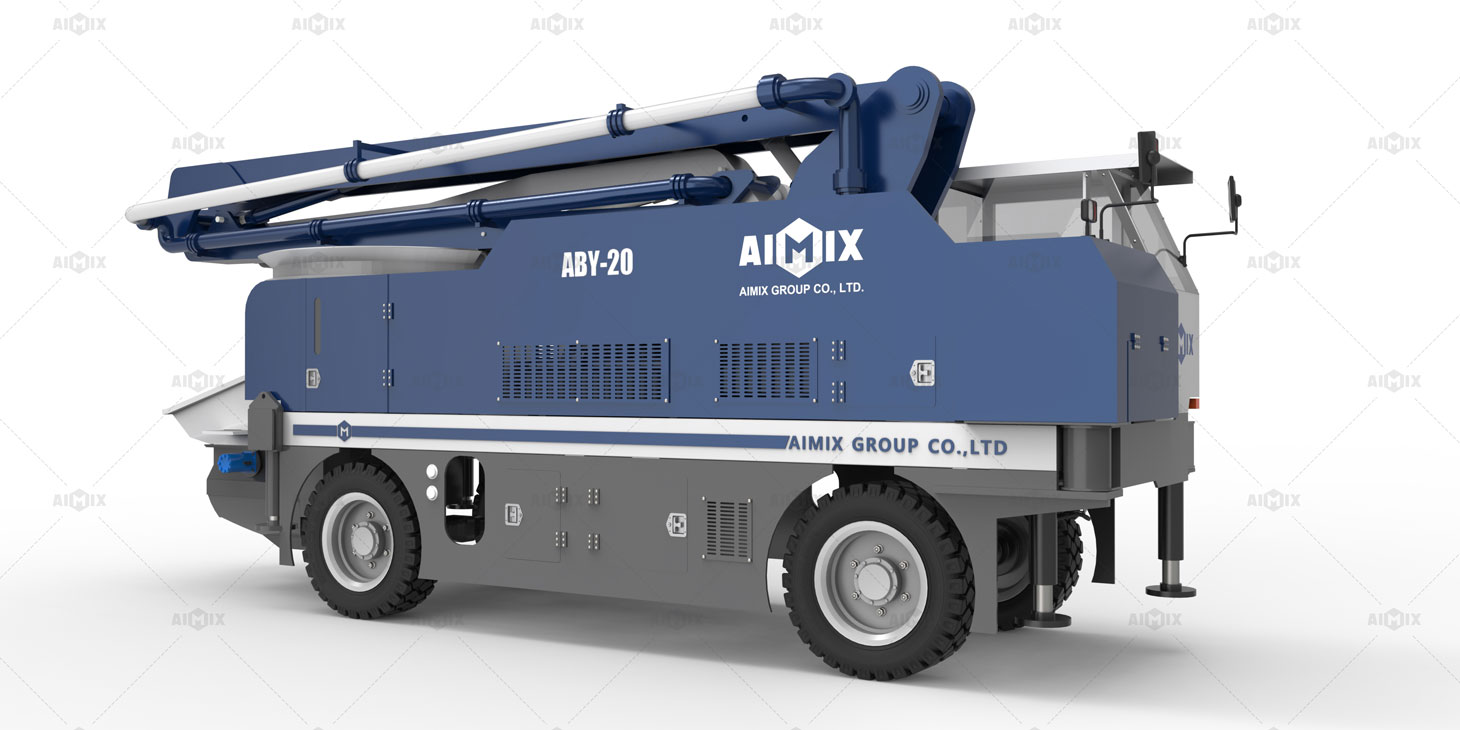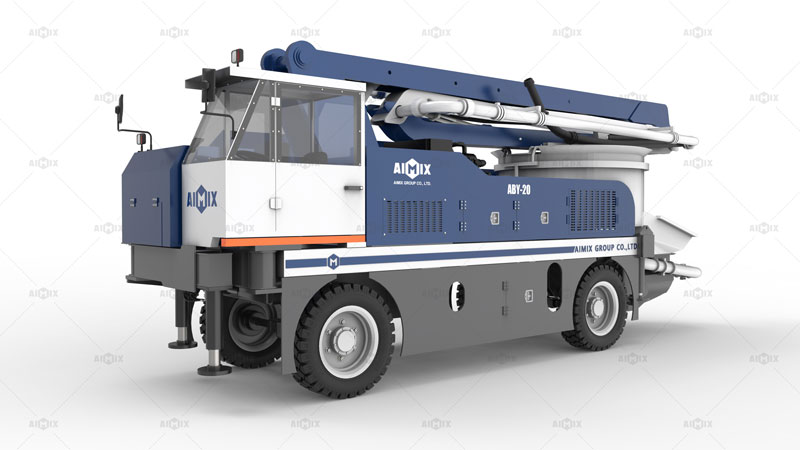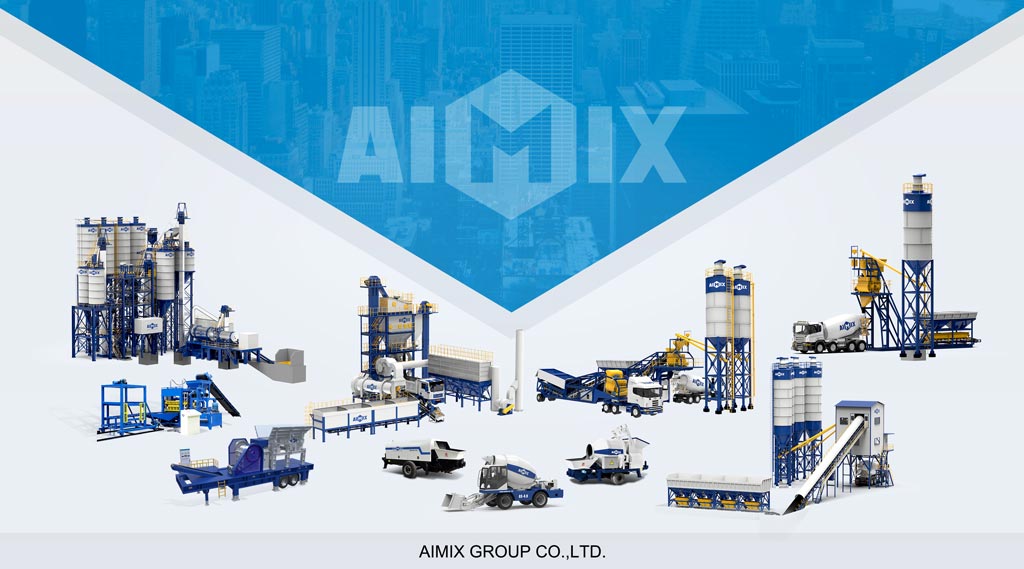The conventional paradigm of construction logistics is predicated on a fundamental, and often unstated, assumption: that the ground is stable, level, and accessible. This assumption collapses when confronted with the realities of mountainous regions, densely forested areas, or sites with significant pre-existing elevation changes. Standard truck-mounted boom concrete pumps and mixers are rendered impotent by inclines that exceed a modest gradient, their rigid frames and wheel-based propulsion proving inadequate. The result is a reliance on extensive, costly, and ecologically damaging site preparation or the use of convoluted and inefficient material handling methods. This logistical impasse has long dictated which projects are feasible and which are abandoned. The emergence of the crawler boom pump and mixer with a 35° climbing ability represents a direct and critical challenge to this outdated limitation, offering a technological solution that redefines the very meaning of site accessibility.

The Limitations of Conventional Equipment in Extreme Topography
A critical examination of traditional equipment reveals a suite of inherent vulnerabilities when deployed in non-standard conditions. Truck-mounted pumps require a stable, level platform to operate safely. On an incline, the vehicle’s center of gravity shifts, creating a significant risk of tipping. The outriggers, designed for flat surfaces, cannot compensate for this instability, making operation not just inefficient, but dangerously precarious. Furthermore, the act of simply reaching an elevated or remote site often proves impossible for these vehicles. Their limited traction and ground clearance make them susceptible to getting stuck in soft, uneven, or steep terrain. The common “solution” – extensive grading and the construction of temporary access roads – is often a pyrrhic victory. It introduces massive upfront costs, delays project initiation, and causes unnecessary land disturbance, undermining the project’s economic and environmental viability before a single cubic meter of concrete is poured.
Deconstructing the 35° Capability: An Engineering Analysis
The 35° climbing ability is not a marketing hyperbole but a function of deliberate and sophisticated engineering. The core of this capability lies in the crawler undercarriage. Unlike wheels, which have a limited contact patch, crawler tracks distribute the machine’s weight over a much larger area, resulting in exceptionally low ground pressure. This prevents sinking in soft ground and provides a stable base. The individual track units can articulate independently, allowing the machine to maintain contact with uneven surfaces, thereby enhancing stability on slopes where a rigid truck frame would fail.
Power distribution is equally critical. These machines utilize advanced hydraulic systems that deliver torque precisely to each track, enabling them to “walk” up steep inclines with controlled power. This is coupled with a robust chassis and a counterweight system engineered specifically for inclined operation, ensuring the center of gravity remains within safe parameters. The integration of the concrete pump mixer onto this stable, mobile platform means that the entire concrete production and placement system arrives at the point of need, fully operational and unaffected by the severe angle of the terrain.

Operational Paradigm Shift in Challenging Environments
The practical implications of this capability constitute a paradigm shift. Consider a project involving a foundation for a communications tower on a remote mountain ridge. Traditionally, this would require a helicopter lift for materials or the blasting and grading of a switchback road. The crawler boom pump and mixer can traverse the existing slope directly, carrying its own raw materials (cement, aggregate, water) and placing concrete with precision upon arrival. This eliminates the need for disruptive earthworks and exorbitant aerial logistics.
The impact on project feasibility is profound. Tasks that were once considered prohibitively expensive or logistically nightmareish are now within reach. Projects in environmentally sensitive areas can proceed with a dramatically reduced footprint. Timelines are compressed because the machine’s mobility bypasses weeks or months of preparatory site work. This technological leap transforms projects from theoretical possibilities into executable plans, unlocking new frontiers for infrastructure, energy, and community development in topographically challenging regions.
Beyond the Incline: The Holistic Advantages of Terrain Independence
The benefits of this terrain independence extend far beyond simply conquering a steep slope. By eliminating the need for extensive access roads, the ecological impact of a project is minimized. There is less soil erosion, less habitat fragmentation, and a smaller overall disturbance to the landscape. This is a crucial advantage in an era of increasing environmental regulation and public scrutiny.
From a purely economic perspective, the savings are multifaceted. The direct costs of road construction are avoided. The indirect costs associated with project delays are mitigated by the machine’s rapid deployment and continuous operation. This combination of environmental stewardship and economic efficiency is rare. The crawler concrete mixer with pump for sale does not merely solve an access problem; it redefines the relationship between construction and the natural landscape, enabling progress without the traditional collateral damage. It allows engineers and contractors to approach extreme conditions not as an insurmountable barrier, but as a manageable variable.

Comments
No comments yet. Be the first to react!